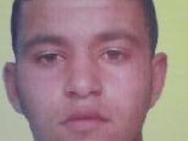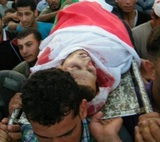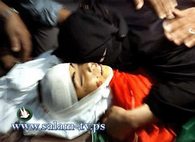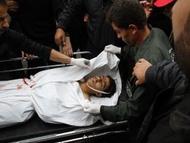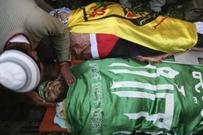Israeli tanks entered Gaza south of al-Maghazi refugee camp and fired on Palestinians. Red Crescent teams evacuated the bodies of two teenagers on Tuesday morning, after a two-hour search operation.
Gaza Health Ministry spokesman Ashraf al-Qidra identified the victims as Muhammad Bassam Abu Mueliq and Yousif Talbani, both aged 16. Al-Qidra said that their bodies were riddled with bullets.
Gaza Health Ministry spokesman Ashraf al-Qidra identified the victims as Muhammad Bassam Abu Mueliq and Yousif Talbani, both aged 16. Al-Qidra said that their bodies were riddled with bullets.
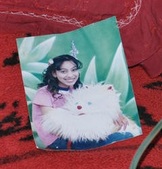
Hanin Kamal Abu Jalala 16
Died of wounds 22 jan 2012 Cast Lead
Suffered 3 years Ago
Palestinian medical sources reported Sunday that Hanin Kamal Abu Jalala, 16, died of wounds suffered during the Israeli offensive on Gaza three years ago. The child was severely wounded by phosphorous shells fired by the Israeli army into civilian areas in Gaza.
Abu Jalala lived with her family in Al-Boreij refugee camp, in the central Gaza Strip. Her injury also resulted in lung fibrosis.
She was hospitalized at the Hadassah Israeli hospital, and fell into coma nearly twelve days ago after undergoing surgery.
Her father, Kamal Abu Jalala, told the Safa News Agency that the administration at the Hadassah hospital is responsible for his daughter’s health, and added that the administration is refusing to grant him a photocopy of her medical file.
Her body will be moved from Hadassah to the Al Maqassed Islamic Hospital in East Jerusalem, before she is moved back to the Gaza Strip.
During the three-week war on Gaza, starting December 27, 2008, Israeli troops bombarded civilian areas and used phosphorous shells in direct violation of International law.
1419 Palestinians were killed during the war, and thousands were injured; dozens died of their wounds.
The majority of the casualties were civilians, including infants, children, women and elderly, medics and journalists.
The army also bombarded infrastructure, medical facilities, educational facilities, UNRWA facilities and civilian homes and structures.
Is 17-year-old girl Cast Lead’s latest victim?
Text messages on a cell phone, some medicine and respiration equipment were all that remained after Haneen Abu Jalala, a 17-year-old girl from al-Bureij refugee camp in Gaza, died last month at an Israeli hospital.
“Dad, please save me from this torture.”
“Dad, you are the greatest dad on earth.”
These were some of the texts that Haneen typed before she perished from respiratory complications she had sustained following Operation Cast Lead, Israel’s war on Gaza in December 2008 and January 2009. Her family suspects that exposure to white phosphorous is the cause of her ailments and eventual death.
Haneen died on 22 January at Hadassah Medical Center in Israel after she had entered a coma. Haneen had to leave school three years ago after she began to have breathing difficulties and her entire body turned blue.
“No more smiles”
Kamal Abu Jalala, Haneen’s father, and some of his eleven children were gathered along with various relatives inside Haneen’s now empty room in the family’s home.
“No more smiles, no more sounds, no more chatting and no more Haneen in Haneen’s room now,” said Umm Hamza, Haneen’s sister, her eyes welling with tears.
“Despite her severe health problems that complicated her life, she was filled with optimism and energy. She used to take me as her own twin sister, as she used to tell me about her ambitions, dreams and determination to live, saying she was very hopeful that she would return back to school to pursue her education,” her sister added.
Another of Haneen’s sisters, Ahlam, said, “May God take revenge on those who caused the death of my poor sister Haneen.”
“In spite of her sickness and suffering, Haneen used to fill our home with joy through her broad smile, her utter optimism and cheerfulness,” Ahlam added.
“I recall one day I felt sick, Haneen kept crying and prayed for me to recover to the extent that she helped me type some of my research papers [for a university degree] on the computer. Not because she is my sister, she was really like an angel and, God willing, she will go to paradise peacefully as a martyr,” she said.
Ahmad, Haneen’s twenty-year-old brother, said, “I am a construction worker and earn little, but every day when I returned back from my work, I used to bring her some cookies, potato chips and chocolate. All I wanted was to let her feel comfortable. Haneen was really a very tender girl.”
Haneen’s mother, Umm al-Abed, has been especially distraught following her daughter’s death and has found it hard to speak to visitors.
“Since Haneen’s death, Umm al-Abed has been continuously crying and unable to eat or drink properly,” Kamal said.
Lengthy treatment
A last text message from Haneen to her father
Kamal talked of the lengthy treatment his daughter underwent, shedding tears he spoke.
“When Haneen began to have respiratory problems a few weeks after the Israeli war on Gaza came to an end in January 2009, I realized that my daughter needed medication, so I decided first and foremost to see local doctors,” Kamal recalled.
“The local doctors diagnosed her with a respiratory infection and they prescribed some medicines along with respiratory treatment sessions inside the hospital. As my daughter’s case deteriorated, I moved her to our home, so that we took care of her instead.”
Kamal suspects that white phosphorous, fired by the Israeli military at the rooftop of his house, ultimately caused Haneen’s death.
Holding a small picture of his deceased daughter, he said, “I recall well that one day during the war, Israeli occupation forces shelled the area with weapons that we hadn’t seen before. On the rooftop of my house, myself and the children, including Haneen, saw some flashing bodies. Suddenly smoke filled the place and Haneen began to cough and feel suffocated. At a nearby hospital, she was treated and returned back home.”
Haneen went on to receive treatment in Egypt and Israel.
A month in Egypt
In Egypt, Haneen received medical care for one month at the Nasser Institute in Cairo. Kamal, who accompanied his ailing daughter, was told by the hospital that Haneen was suffering from some sort of respiratory infection and that with the help of certain treatment, she would begin to recover.
“At the hospital, I tried relentlessly to find exactly what was the cause of my daughter’s health condition, but in vain. The only thing doctors told me was that Haneen was suffering from some respiratory infection, no more. We returned back to Gaza and her case deteriorated again.”
After contacting the Palestinian Authority’s health ministry in the West Bank city of Ramallah, Kamal, who was jailed for two and a half years by Israel in the 1980s, managed to transfer his daughter to an Israeli hospital.
Strange symptoms
“The ten-minute-long operation took exactly three hours and 35 minutes instead … Afterwards, she was placed at the intensive care unit, where new strange symptoms appeared on her. She was getting swelling, while I was not able to do anything for her.”
Kamal added that as his daughter’s case worsened and her kidney stopped functioning, he asked doctors at the hospital about what exactly his daughter was suffering from.
“I wanted to learn what was going on but doctors at the hospital revealed nothing to me, saying that it was not dangerous and that Haneen would recover soon. They also took a second sample from her lung and sent it to the US for testing, they told me. When I asked about the test’s result, they told me nothing until Haneen passed away on her hospital bed,” Kamal said angrily.
The Abu Jalala family have no answers for what happened to their daughter, just a few text messages reminding them of the young life that ended too soon.
Rami Almeghari is a journalist and university lecturer based in the Gaza Strip.
Died of wounds 22 jan 2012 Cast Lead
Suffered 3 years Ago
Palestinian medical sources reported Sunday that Hanin Kamal Abu Jalala, 16, died of wounds suffered during the Israeli offensive on Gaza three years ago. The child was severely wounded by phosphorous shells fired by the Israeli army into civilian areas in Gaza.
Abu Jalala lived with her family in Al-Boreij refugee camp, in the central Gaza Strip. Her injury also resulted in lung fibrosis.
She was hospitalized at the Hadassah Israeli hospital, and fell into coma nearly twelve days ago after undergoing surgery.
Her father, Kamal Abu Jalala, told the Safa News Agency that the administration at the Hadassah hospital is responsible for his daughter’s health, and added that the administration is refusing to grant him a photocopy of her medical file.
Her body will be moved from Hadassah to the Al Maqassed Islamic Hospital in East Jerusalem, before she is moved back to the Gaza Strip.
During the three-week war on Gaza, starting December 27, 2008, Israeli troops bombarded civilian areas and used phosphorous shells in direct violation of International law.
1419 Palestinians were killed during the war, and thousands were injured; dozens died of their wounds.
The majority of the casualties were civilians, including infants, children, women and elderly, medics and journalists.
The army also bombarded infrastructure, medical facilities, educational facilities, UNRWA facilities and civilian homes and structures.
Is 17-year-old girl Cast Lead’s latest victim?
Text messages on a cell phone, some medicine and respiration equipment were all that remained after Haneen Abu Jalala, a 17-year-old girl from al-Bureij refugee camp in Gaza, died last month at an Israeli hospital.
“Dad, please save me from this torture.”
“Dad, you are the greatest dad on earth.”
These were some of the texts that Haneen typed before she perished from respiratory complications she had sustained following Operation Cast Lead, Israel’s war on Gaza in December 2008 and January 2009. Her family suspects that exposure to white phosphorous is the cause of her ailments and eventual death.
Haneen died on 22 January at Hadassah Medical Center in Israel after she had entered a coma. Haneen had to leave school three years ago after she began to have breathing difficulties and her entire body turned blue.
“No more smiles”
Kamal Abu Jalala, Haneen’s father, and some of his eleven children were gathered along with various relatives inside Haneen’s now empty room in the family’s home.
“No more smiles, no more sounds, no more chatting and no more Haneen in Haneen’s room now,” said Umm Hamza, Haneen’s sister, her eyes welling with tears.
“Despite her severe health problems that complicated her life, she was filled with optimism and energy. She used to take me as her own twin sister, as she used to tell me about her ambitions, dreams and determination to live, saying she was very hopeful that she would return back to school to pursue her education,” her sister added.
Another of Haneen’s sisters, Ahlam, said, “May God take revenge on those who caused the death of my poor sister Haneen.”
“In spite of her sickness and suffering, Haneen used to fill our home with joy through her broad smile, her utter optimism and cheerfulness,” Ahlam added.
“I recall one day I felt sick, Haneen kept crying and prayed for me to recover to the extent that she helped me type some of my research papers [for a university degree] on the computer. Not because she is my sister, she was really like an angel and, God willing, she will go to paradise peacefully as a martyr,” she said.
Ahmad, Haneen’s twenty-year-old brother, said, “I am a construction worker and earn little, but every day when I returned back from my work, I used to bring her some cookies, potato chips and chocolate. All I wanted was to let her feel comfortable. Haneen was really a very tender girl.”
Haneen’s mother, Umm al-Abed, has been especially distraught following her daughter’s death and has found it hard to speak to visitors.
“Since Haneen’s death, Umm al-Abed has been continuously crying and unable to eat or drink properly,” Kamal said.
Lengthy treatment
A last text message from Haneen to her father
Kamal talked of the lengthy treatment his daughter underwent, shedding tears he spoke.
“When Haneen began to have respiratory problems a few weeks after the Israeli war on Gaza came to an end in January 2009, I realized that my daughter needed medication, so I decided first and foremost to see local doctors,” Kamal recalled.
“The local doctors diagnosed her with a respiratory infection and they prescribed some medicines along with respiratory treatment sessions inside the hospital. As my daughter’s case deteriorated, I moved her to our home, so that we took care of her instead.”
Kamal suspects that white phosphorous, fired by the Israeli military at the rooftop of his house, ultimately caused Haneen’s death.
Holding a small picture of his deceased daughter, he said, “I recall well that one day during the war, Israeli occupation forces shelled the area with weapons that we hadn’t seen before. On the rooftop of my house, myself and the children, including Haneen, saw some flashing bodies. Suddenly smoke filled the place and Haneen began to cough and feel suffocated. At a nearby hospital, she was treated and returned back home.”
Haneen went on to receive treatment in Egypt and Israel.
A month in Egypt
In Egypt, Haneen received medical care for one month at the Nasser Institute in Cairo. Kamal, who accompanied his ailing daughter, was told by the hospital that Haneen was suffering from some sort of respiratory infection and that with the help of certain treatment, she would begin to recover.
“At the hospital, I tried relentlessly to find exactly what was the cause of my daughter’s health condition, but in vain. The only thing doctors told me was that Haneen was suffering from some respiratory infection, no more. We returned back to Gaza and her case deteriorated again.”
After contacting the Palestinian Authority’s health ministry in the West Bank city of Ramallah, Kamal, who was jailed for two and a half years by Israel in the 1980s, managed to transfer his daughter to an Israeli hospital.
Strange symptoms
“The ten-minute-long operation took exactly three hours and 35 minutes instead … Afterwards, she was placed at the intensive care unit, where new strange symptoms appeared on her. She was getting swelling, while I was not able to do anything for her.”
Kamal added that as his daughter’s case worsened and her kidney stopped functioning, he asked doctors at the hospital about what exactly his daughter was suffering from.
“I wanted to learn what was going on but doctors at the hospital revealed nothing to me, saying that it was not dangerous and that Haneen would recover soon. They also took a second sample from her lung and sent it to the US for testing, they told me. When I asked about the test’s result, they told me nothing until Haneen passed away on her hospital bed,” Kamal said angrily.
The Abu Jalala family have no answers for what happened to their daughter, just a few text messages reminding them of the young life that ended too soon.
Rami Almeghari is a journalist and university lecturer based in the Gaza Strip.
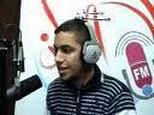
Yasser 'Aahed al-Hilu 16
Killed 22 mar 2011
Four Palestinian civilians, including two children, were killed and 12 others injured when Israeli tanks bombarded a house in Gaza City on Tuesday afternoon.
Local sources said that Israeli tanks stationed at the borders fired five shells at the house of Fayek al-Hilou and a nearby soccer playground, located in the al-Shoujaya neighborhood of Gaza City.
Medics said that four people were killed:
1- Mohammed Jalal al-Hilu, 11,
2-Yasser 'Aahed al-Hilu, 16,
3- Mohammed Saber Harara, 19, and
4- Yasser Hamed al-Hilu, 50.
Twelve other civilians were injured, including four other children in critical condition, medics told PNN.
Eyewitnesses said the wounded Palestinians were transported to al-Shifa hospital in Gaza City and Kemal Adwan hospital in Beit Lahiya for treatment. According to Palestinian state-run news wire Wafa, huge damage was reported to homes and property and school children were terrified.
Killed 22 mar 2011
Four Palestinian civilians, including two children, were killed and 12 others injured when Israeli tanks bombarded a house in Gaza City on Tuesday afternoon.
Local sources said that Israeli tanks stationed at the borders fired five shells at the house of Fayek al-Hilou and a nearby soccer playground, located in the al-Shoujaya neighborhood of Gaza City.
Medics said that four people were killed:
1- Mohammed Jalal al-Hilu, 11,
2-Yasser 'Aahed al-Hilu, 16,
3- Mohammed Saber Harara, 19, and
4- Yasser Hamed al-Hilu, 50.
Twelve other civilians were injured, including four other children in critical condition, medics told PNN.
Eyewitnesses said the wounded Palestinians were transported to al-Shifa hospital in Gaza City and Kemal Adwan hospital in Beit Lahiya for treatment. According to Palestinian state-run news wire Wafa, huge damage was reported to homes and property and school children were terrified.
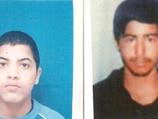
Imad Faraj-Allah 16
Killed 19 mar 2011
Two children were killed in Gaza while trying to cross the border to look for a job in Israel.
Imad and Qasem were friends and classmates. They lived in An Nuseirat refugee camp, Central Gaza. Qasem lived in a household of fourteen members. Imad, according to his father, ‘was a quiet boy; he didn"t mingle with too many people; just with some friends from school. He used to come home in the evening after playing in the street and go straight to his room.'
On 19 March 2011, both children went missing from their homes. Imad’s father remembers the last time he saw his son: ‘At around 6:00 pm on 19 March 2011, I saw Imad (...) He sat with us for a while to drink some tea, and then went out again. At around 9:00pm, I went to bed without seeing him again. I didn"t know whether he had come back home or was sill out. At around 10:00pm, I heard huge explosions and called a friend who lives in the Gaza governorate to ask him what was happening. He said the waste dump in Juhor ad Dik in central Gaza had been bombed. I didn"t pay much attention to this news as bombings are frequent. Anyway, about two hours later I heard on the radio that two people had been killed in that area, the waste dump. I thought they were probably fighters (...) The next morning, at around eight, my wife came to the room and said she couldn"t find Imad. We asked his siblings, and they said he hadn"t slept in his room.' His mother went to look for him, but to no avail, so his father went to the police to report him missing.
Qasem’s father, on the other hand, noticed his son’s absence the evening before, on return from evening prayers in the mosque. ‘My sons and I left the house and went to look for him. We kept looking until around 10:00pm but couldn"t find him.’
At around 11:00 am on 20 March 2011, ‘a relative called me and said he had heard on the radio that two children had been killed and their bodies were in Shifa hospital in Gaza City,' says Imad’s father. 'I started thinking it could be him [Imad]. I quickly rushed to the hospital and headed straight to the morgue and asked to see the dead bodies. Imad was there. (...) His left eye was injured, his right arm was hanging off, not to mention the multiple wounds all over his body.'
Qasem’s father also headed to the morgue on hearing of his son’s death from someone in Imad’s family: 'When I arrived, I found Qasem in the morgue. He was wearing the same clothes as when he had left the house. It seemed his clothes were not torn, but I couldn"t check properly because it was too painful for me to look at him lying there. The doctors told me he had died of shrapnel wounds in his back before he arrived in the hospital.'
Imad’s friend, Nedal, says Imad was obsessed with crossing the border and finding a job in Israel: ‘His family is poor. His father doesn"t work much. (...) Imad dreamed of having money to buy what he needed, especially clothes. He used to talk about working in Israel. (...) “I can sneak into the border and enter Israel and work there; there"s plenty of work there,” he said. (...) “But how would you enter Israel?” I asked him. “Simple,” he said and then brought a pen and a paper and started drawing the border line and explaining how he would go to the village of Juhor ad Dik, approach the border line and cut it to enter into Israel. “If the army catches me, that won"t be a problem because I"ll tell them that I need to work since my conditions are very harsh,” Imad said.'
Since the beginning of 2011, DCI has documented the deaths of six Palestinian children killed as a result of Israeli airstrikes and tank shells in the Gaza Strip. At least eight more have been injured
Killed 19 mar 2011
Two children were killed in Gaza while trying to cross the border to look for a job in Israel.
Imad and Qasem were friends and classmates. They lived in An Nuseirat refugee camp, Central Gaza. Qasem lived in a household of fourteen members. Imad, according to his father, ‘was a quiet boy; he didn"t mingle with too many people; just with some friends from school. He used to come home in the evening after playing in the street and go straight to his room.'
On 19 March 2011, both children went missing from their homes. Imad’s father remembers the last time he saw his son: ‘At around 6:00 pm on 19 March 2011, I saw Imad (...) He sat with us for a while to drink some tea, and then went out again. At around 9:00pm, I went to bed without seeing him again. I didn"t know whether he had come back home or was sill out. At around 10:00pm, I heard huge explosions and called a friend who lives in the Gaza governorate to ask him what was happening. He said the waste dump in Juhor ad Dik in central Gaza had been bombed. I didn"t pay much attention to this news as bombings are frequent. Anyway, about two hours later I heard on the radio that two people had been killed in that area, the waste dump. I thought they were probably fighters (...) The next morning, at around eight, my wife came to the room and said she couldn"t find Imad. We asked his siblings, and they said he hadn"t slept in his room.' His mother went to look for him, but to no avail, so his father went to the police to report him missing.
Qasem’s father, on the other hand, noticed his son’s absence the evening before, on return from evening prayers in the mosque. ‘My sons and I left the house and went to look for him. We kept looking until around 10:00pm but couldn"t find him.’
At around 11:00 am on 20 March 2011, ‘a relative called me and said he had heard on the radio that two children had been killed and their bodies were in Shifa hospital in Gaza City,' says Imad’s father. 'I started thinking it could be him [Imad]. I quickly rushed to the hospital and headed straight to the morgue and asked to see the dead bodies. Imad was there. (...) His left eye was injured, his right arm was hanging off, not to mention the multiple wounds all over his body.'
Qasem’s father also headed to the morgue on hearing of his son’s death from someone in Imad’s family: 'When I arrived, I found Qasem in the morgue. He was wearing the same clothes as when he had left the house. It seemed his clothes were not torn, but I couldn"t check properly because it was too painful for me to look at him lying there. The doctors told me he had died of shrapnel wounds in his back before he arrived in the hospital.'
Imad’s friend, Nedal, says Imad was obsessed with crossing the border and finding a job in Israel: ‘His family is poor. His father doesn"t work much. (...) Imad dreamed of having money to buy what he needed, especially clothes. He used to talk about working in Israel. (...) “I can sneak into the border and enter Israel and work there; there"s plenty of work there,” he said. (...) “But how would you enter Israel?” I asked him. “Simple,” he said and then brought a pen and a paper and started drawing the border line and explaining how he would go to the village of Juhor ad Dik, approach the border line and cut it to enter into Israel. “If the army catches me, that won"t be a problem because I"ll tell them that I need to work since my conditions are very harsh,” Imad said.'
Since the beginning of 2011, DCI has documented the deaths of six Palestinian children killed as a result of Israeli airstrikes and tank shells in the Gaza Strip. At least eight more have been injured
Medical sources in the Gaza Strip that the number of Palestinians killed in the Gaza Strip on Friday morning arrived at two after a wounded resident died of his wounds.
The two were killed after an explosive left by the Israeli army detonated near them. The sources added that Mo'men Hallas, 16, dies of his wounds at the al-Shifa Hospital in Gaza city, shortly after suffering serious injuries. The first child, Montaser al-Batteekhy, 16, was immediately killed when the explosive went off.
Several Palestinians were wounded in a number of Israeli military attacks in the Gaza Strip on Friday morning.
The two were killed after an explosive left by the Israeli army detonated near them. The sources added that Mo'men Hallas, 16, dies of his wounds at the al-Shifa Hospital in Gaza city, shortly after suffering serious injuries. The first child, Montaser al-Batteekhy, 16, was immediately killed when the explosive went off.
Several Palestinians were wounded in a number of Israeli military attacks in the Gaza Strip on Friday morning.
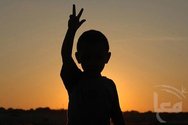
Husam Khaled Ibrahim Abdallah Musa abu-Said 16
Killed 12 sept 2010 truce violation
Three shepherds, including elderly man, killed by Israeli forces in northern Gaza
Late Sunday evening, Israeli forces stationed on the Gaza-Israel border fired tank shells across the border into the Gaza Strip, killing three shepherds – although Israel claims the men were fighters preparing to fire a homemade shell into Israel.
Over twenty Palestinians have been killed by Israeli forces since last year on the Gaza-Israel border, many of whom were killed for allegedly getting too close to the 'no-man's land' that Israel has established on the Gazan side of the border.
Killed 12 sept 2010 truce violation
Three shepherds, including elderly man, killed by Israeli forces in northern Gaza
Late Sunday evening, Israeli forces stationed on the Gaza-Israel border fired tank shells across the border into the Gaza Strip, killing three shepherds – although Israel claims the men were fighters preparing to fire a homemade shell into Israel.
Over twenty Palestinians have been killed by Israeli forces since last year on the Gaza-Israel border, many of whom were killed for allegedly getting too close to the 'no-man's land' that Israel has established on the Gazan side of the border.
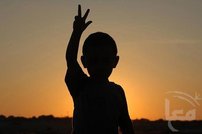
Muhammad Amin Muhammad Shahawan 16
Killed 1 june 2010
Killed 1 june 2010
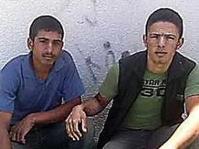
Nader Abu Duqqa 16
Killed 21 may 2010 truce violation
Two children killed in the southern Gaza border
“The firing was coming from its 500ml machine gun and focused at the child who was raising his hand… as if he was surrendering.”
On 21 May 2010, at around 1:00pm, Hamdi and Nader Abu Duqqa, cousins, took an assault rifle that belonged to their cousin and headed to the buffer zone that separates al-Faraheen area, east of Khan Yunis, Gaza, from the Israeli border. Both Hamdi and Nader had family problems and often talked about carrying out a “martyrdom operation.”
At around 1:30pm, their cousin Tarek (19) received a phone call from Nader saying: “Ask the youngsters to forgive me”. Then, he started hearing heavy shooting coming from the border zone.
According to Fadi Abu Duqqa (27), who can see the border area from the roof of his house, the shots came from a jeep parked near one of the observation towers, and from soldiers positioned in the second observation tower. They were aiming at two men who were crawling on the ground.
Around twenty minutes later, Tarek got hold of Nader. Gasping and crying, Nader said: “Please my cousin, come and take me.”
Tarek advised him to try to crawl back, or to tell Hamdi to carry him, but Nader said: “He’s injured in the head and chest, I’m injured in the chest and legs”.
At that moment, an Apache helicopter appeared hovering overhead and started firing at the hill east of the fence, between the two Israeli observation towers. From his roof, Fadi saw one of the children on the ground “lifting his hand up in the air as if he was surrendering.”
Then, he saw a tank firing at very close range: “The firing was coming from its 500ml machine gun and focused at the child who was raising his hand.”
On Saturday, 22 May 2010, at around 2:00am, Nader and Hamdi’s bodies were handed over to Naser Hospital in Khan Yunis. Their bodies were torn apart, “as if they were torn apart by a knife, not live ammunition.” Tarek cannot forget his last call with Nader, when he asked him for help.
The following information is based on two affidavits taken by DCI from Nader and Hamdi’s cousins, Tareq Saqer Hasan Abu Duqqa (19) and Fadi Adnan Abed Rabbo Abu Duqqa (27), on 5 June 2010.
On 21 May 2010, Tarek Abu Duqqa (19) went to the mosque for Friday prayer. On his way back, his uncle informed him that his cousins Hamdi (17) and Nader Abu Duqqa (17) had taken an assault rifle that belonged to their cousin and had left the house.
Tarek immediately knew Hamdi and Nader had gone to the border fence that separates al-Faraheen area, east of Khan Yunis, Gaza, from the Israeli border. Both Hamdi and Nader had family problems and often talked about carrying out a “martyrdom operation.” Tarek remembers: “They always talked about this in front of me since I was their friend. The three of us were always together but I thought they were not serious because they didn’t have a gun.
But now that they had a gun, it was possible that they would do it.” Tarek took his bicycle and rushed to al-Faraheen area. At around 1:30pm, he received a phone call from Nader: “Ask the youngsters to forgive me,” Nader said. Tarek tried to call him back, but he could not get through. Then, he started hearing heavy shooting coming from the area near the border fence.
When Fadi Abu Duqqa (27) heard the shooting, he went outside his house, located near the buffer zone, to see what was happening. There, he met with his cousins Ali and Fadi, who told him that Nader (17) and Hamdi (17), also his relatives, had tried to cross the border into Israel and had been shot. Fadi rushed to his roof and saw soldiers shooting at the hill between the towers: “I saw an Israeli jeep parked near Qulbat al-Faraheen [observation tower] and shooting at the hill between the two observation rooms on the border. I also saw the soldiers in Qulbat Abu ash-Shabab [second observation tower] shooting at the hill as well.”
When he looked at the hill, he saw two men crawling on the ground, but he couldn’t recognize which one was Nader and which one was Hamdi. He went down to the street to inform the people gathered there that Nader and Hamdi were still alive.
At that moment, Tarek received another missed call from Nader. Tarek called him back. Gasping and crying, Nader said: “Please my cousin, come and take me.” Tarek advised him to try to crawl back, or to tell Hamdi to carry him, but Nader said: “He’s injured in the head and chest, I’m injured in the chest and legs”. Then the call was disconnected.
An Israeli Apache helicopter appeared hovering overhead and opened fire. Although Fadi was scared to go to his roof again for fear of being targeted, he climbed again and saw one of the children on the ground “lifting his hand up in the air as if he was surrendering.”
At that moment, an Israeli tank opened fire at the child from a very close range. “The firing was coming from its 500ml machine gun and focused at the child who was raising his hand.”
Both Nader and Hamdi were killed.
Their bodies were handed over to the Red Cross and taken to Naser Hospital. Tarek, who saw their bodies, describes them as follows:
“Hamdi’s face was disfigured and his lower jaw was cut off. His legs were severely torn apart as if they were torn apart by a knife, not live ammunition.
Nader’s abdomen, chest, and legs were injured. His body was torn apart as if it was cut off with a knife especially in his legs.” Nader and Hamdi were buried the next morning.
Talking to DCI in June 2010, Tarek says: “I can’t forget my last call with Nader when he asked me to help him get out from the border. I can’t forget his crying and breathing that I heard through the phone.”
Killed 21 may 2010 truce violation
Two children killed in the southern Gaza border
“The firing was coming from its 500ml machine gun and focused at the child who was raising his hand… as if he was surrendering.”
On 21 May 2010, at around 1:00pm, Hamdi and Nader Abu Duqqa, cousins, took an assault rifle that belonged to their cousin and headed to the buffer zone that separates al-Faraheen area, east of Khan Yunis, Gaza, from the Israeli border. Both Hamdi and Nader had family problems and often talked about carrying out a “martyrdom operation.”
At around 1:30pm, their cousin Tarek (19) received a phone call from Nader saying: “Ask the youngsters to forgive me”. Then, he started hearing heavy shooting coming from the border zone.
According to Fadi Abu Duqqa (27), who can see the border area from the roof of his house, the shots came from a jeep parked near one of the observation towers, and from soldiers positioned in the second observation tower. They were aiming at two men who were crawling on the ground.
Around twenty minutes later, Tarek got hold of Nader. Gasping and crying, Nader said: “Please my cousin, come and take me.”
Tarek advised him to try to crawl back, or to tell Hamdi to carry him, but Nader said: “He’s injured in the head and chest, I’m injured in the chest and legs”.
At that moment, an Apache helicopter appeared hovering overhead and started firing at the hill east of the fence, between the two Israeli observation towers. From his roof, Fadi saw one of the children on the ground “lifting his hand up in the air as if he was surrendering.”
Then, he saw a tank firing at very close range: “The firing was coming from its 500ml machine gun and focused at the child who was raising his hand.”
On Saturday, 22 May 2010, at around 2:00am, Nader and Hamdi’s bodies were handed over to Naser Hospital in Khan Yunis. Their bodies were torn apart, “as if they were torn apart by a knife, not live ammunition.” Tarek cannot forget his last call with Nader, when he asked him for help.
The following information is based on two affidavits taken by DCI from Nader and Hamdi’s cousins, Tareq Saqer Hasan Abu Duqqa (19) and Fadi Adnan Abed Rabbo Abu Duqqa (27), on 5 June 2010.
On 21 May 2010, Tarek Abu Duqqa (19) went to the mosque for Friday prayer. On his way back, his uncle informed him that his cousins Hamdi (17) and Nader Abu Duqqa (17) had taken an assault rifle that belonged to their cousin and had left the house.
Tarek immediately knew Hamdi and Nader had gone to the border fence that separates al-Faraheen area, east of Khan Yunis, Gaza, from the Israeli border. Both Hamdi and Nader had family problems and often talked about carrying out a “martyrdom operation.” Tarek remembers: “They always talked about this in front of me since I was their friend. The three of us were always together but I thought they were not serious because they didn’t have a gun.
But now that they had a gun, it was possible that they would do it.” Tarek took his bicycle and rushed to al-Faraheen area. At around 1:30pm, he received a phone call from Nader: “Ask the youngsters to forgive me,” Nader said. Tarek tried to call him back, but he could not get through. Then, he started hearing heavy shooting coming from the area near the border fence.
When Fadi Abu Duqqa (27) heard the shooting, he went outside his house, located near the buffer zone, to see what was happening. There, he met with his cousins Ali and Fadi, who told him that Nader (17) and Hamdi (17), also his relatives, had tried to cross the border into Israel and had been shot. Fadi rushed to his roof and saw soldiers shooting at the hill between the towers: “I saw an Israeli jeep parked near Qulbat al-Faraheen [observation tower] and shooting at the hill between the two observation rooms on the border. I also saw the soldiers in Qulbat Abu ash-Shabab [second observation tower] shooting at the hill as well.”
When he looked at the hill, he saw two men crawling on the ground, but he couldn’t recognize which one was Nader and which one was Hamdi. He went down to the street to inform the people gathered there that Nader and Hamdi were still alive.
At that moment, Tarek received another missed call from Nader. Tarek called him back. Gasping and crying, Nader said: “Please my cousin, come and take me.” Tarek advised him to try to crawl back, or to tell Hamdi to carry him, but Nader said: “He’s injured in the head and chest, I’m injured in the chest and legs”. Then the call was disconnected.
An Israeli Apache helicopter appeared hovering overhead and opened fire. Although Fadi was scared to go to his roof again for fear of being targeted, he climbed again and saw one of the children on the ground “lifting his hand up in the air as if he was surrendering.”
At that moment, an Israeli tank opened fire at the child from a very close range. “The firing was coming from its 500ml machine gun and focused at the child who was raising his hand.”
Both Nader and Hamdi were killed.
Their bodies were handed over to the Red Cross and taken to Naser Hospital. Tarek, who saw their bodies, describes them as follows:
“Hamdi’s face was disfigured and his lower jaw was cut off. His legs were severely torn apart as if they were torn apart by a knife, not live ammunition.
Nader’s abdomen, chest, and legs were injured. His body was torn apart as if it was cut off with a knife especially in his legs.” Nader and Hamdi were buried the next morning.
Talking to DCI in June 2010, Tarek says: “I can’t forget my last call with Nader when he asked me to help him get out from the border. I can’t forget his crying and breathing that I heard through the phone.”
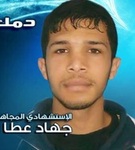
killed 26 mar 2010
On Saturday afternoon, 20 March 2010, the Israeli Occupation Forces (IOF) killed two Palestinian civilians, including a child, in cold blood in Iraq Bourin village, south of Nablus. IOF intentionally fired at the two civilians from a close range. The Palestinian Centre for Human Rights (PCHR) condemns this crime, which demonstrates total disregard for the lives of Palestinian civilians. PCHR stresses that failure to open investigation with suspected Israeli soldiers encourages them to perpetrate more of such crimes.
According to investigations conducted by PCHR and according to statements gives by eyewitnesses, at approximately 11:30 on 20 March 2010, IOF moved into the east of Iraq Borin village, south of Nablus. A number of Palestinian boys gathered and threw stones at Israeli soldier who immediately responded by firing, but no casualties were reported. The Palestinian boys withdrew into the village, while IOF took position in the east of the village. At approximately 15:00, a Palestinian civil Ford transit minibus, driven by Zakareya ‘Adel Qadous, arrived in the village from Nablus. In the meanwhile, Israeli soldiers were positioning approximately 30 miters to the east of the intersection of Iraq Borin village, were out of their jeeps. The driver drove to the west of the village's entrance that branches to the east and to the west. Approximately 100 meters far from the intersection, specifically in front of the mosque of the village, the driver found out that there were inflaming tires and that the street was closed. He stopped Mohammed Ibrahim Abdul Qader Qadous, 16, and Usaid Abdul Naser Qadous, 16,
stepped down from the minibus. As the driver turned around totravel back to Nablus, Israeli soldiers opened fire at Mohammed, who was wounded by a bullet to the heart, and Usaid who was wounded by a bullet to the head. A number of young Palestinians who were in the scene transferred the two wounded persons to the minibus. After the minibus drove for approximately 20 meters, Israeli military jeeps tried to stop it, but the driver managed to escape and reach Nablus Specialized Hospital. Mohammed arrived dead to the hospital, while Usaid underwent a prolonged surgery, but he was pronounced dead on Sunday morning, 21 March 2010. Usaid was student at an-Najah National University in Nablus.
6 apr 2010
Israeli army admits mistakes in death of Nablus boys
More restrictive open-fire directives for Israeli soldiers faced with stone and Molotov cocktail throwing may soon be implemented, in the wake of the deaths of four Nablus residents 19 and under, reports said.
An Israeli military statement, released to Ma’an on Monday, detailed the results of two investigations it said were carried out into the circumstances around the death of four Nablus residents, two men and two teenagers.
In their weekly Protection of Civilians report, released on Friday, the UN Office for the Coordination of Humanitarian Affairs said reports indicated new rules would see Israeli soldiers use live fire only if a Molotov cocktail is thrown at a civilian car. Moreover, the report added, Israeli soldiers would need authorization from ranking officers to fire in the air.
The findings of the OCHA report lined up with comments in the Israeli army statement, which said of the deaths of two boys in Awarta, that “This operational incident is considered unnecessary, and its results severe,” leading to a request by Major-General Mizrahi that “the professional and relevant aspects of riot control be clarified.”
Precipitating the investigation was the death of four civilians in the Nablus-area on 20 and 21 March.
The first death was that of 16-year-old Useid Qadus, shot in the head by Israeli forces on 20 March, and Muhammad Qadus, also 16, who died of wounds to the chest he sustained alongside his cousin in Iraq Burin. Muhammad died on 21 March in hospital.
Later on the same Sunday, Israeli soldiers shot dead 19-year-old farmers Muhammad Faysal and Salah Muhammad Qawariq.
Both were from the Awarta village, southeast of Nablus, and were en route to farmland carrying agricultural tools and herbicide, the same sources said.
According to the military statement, the inquiry into the Iraq Burin incident found soldiers “operating to protect the adjacent community [illegal settlement] of Bracha” encountered “Palestinians hurl[ing] firebombs and rocks at security forces.
“During the incident, a force commanded by a deputy battalion commander entered Iraq Burin in order to arrest a number of rioters,” and when they found the road blocked they exited their vehicles to continue the detention operation on foot.
According to the report “the deputy battalion commander testified that at this point, having received the required authorization, he shot a number of rubber bullets towards the rioters. The deputy battalion commander identified hitting one of the Palestinian rioters. Later on, it was reported that two Palestinians were killed during the riot.”
Despite the investigation, the army said it was unable to “verify the autopsy and could therefore not confirm that the rioters were in fact hit by live rounds.”
Initially the army said that no live fire was used, though medical officials and human rights advocates pointed to photographic evidence and an X-ray showing a live round in the head of Useid they say proves the army used live fire.
A report by the Palestinian Center for Human Rights, however, said several boys were throwing stones at Israeli forces, who responded by firing into the air. The boys returned to their village, as Israeli forces took positions to the east.
“At approximately 15:00, a Palestinian civil Ford transit minibus, driven by Zakareya ‘Adel Qadous, arrived in the village from Nablus,” the PCHR report said, noting soldiers 30 meters away at the intersection entering the village were disembarked from their vehicles.
“As the driver turned around to travel back to Nablus, Israeli soldiers opened fire at Mohammed, who was wounded by a bullet to the heart, and Usaid who was wounded by a bullet to the head,” the report said.
According to the army assessment, its “regional brigade should have led to different actions than those taken by the force when it entered the village.”
PCHR said the “crime is part of a series of war crimes committed by IOF [Israeli Occupation Forces] in the Occupied Palestinian Territory, which reflect total disregard for the lives of Palestinian civilians.”
Death of farmers in Awarta
A second Israeli military investigation into the shooting deaths of the two Awarta farmers said the incident occurred when officers “conducted a security inspection of two Palestinians, when one of the suspects began acting suspiciously and finally assaulted one of the soldiers with a bottle.”
At the time, Israel's army said the two attempted to stab a soldier who was on a "routine patrol" near the Awarta military checkpoint. "In response, forces opened fire and identified a direct hit," an army spokeswoman told Ma'an.
Because of the reportedly suspicious behavior, the army report said, “one of the soldier [sic] felt his life was in danger and fired at the Palestinian. At that point, the second suspect, who was a few meters away, raised his hand holding a sharp object, causing the soldier to believe that he, too, was attempting to attack. As a result, the soldier fired and killed the Palestinian.”
According to a second PCHR investigation, autopsies at Rafidiya Hospital under Dr Abdul Karim Hashash revealed entrance and exit wounds for four bullets in the chest of Mohammed Qawariq; two in the bottom of the abdomen and two to the left thigh and leg.
The autopsy also found Mohammed had sustained fractures and burns in the left leg. “This indicates that he was shot from a close range,” the report said.
The autopsy on Salah Qawariq found that the young man “was hit by a bullet that entered the chest and exited the back, another one to the right arm (with a entrance and an exit) and a third one that entered the back and exited the top of the chest,” PCHR reported.
In his comments on the Israeli army investigation, Major-General Mizrahi “concluded that the results of the incident are difficult, and stated that the force could have operated in a more professional manner and thus could have avoided the need to use fire.”
The report continued, however: “That being said, once the first suspect assaulted the soldier using a weapon, the soldier operated correctly and in accordance with the rules of engagement.”
http://www.maannews.net/eng/ViewDetails.aspx?ID=274364
16 sept 2010
Court Says Criminal Probe Into Fatal Shooting Of Two Palestinians “Unnecessary”
The Israeli High Court Of Justice had decided that a petition demanding a full investigation into the fatal shooting of two Palestinians in Awarta village near the northern West Bank city of Nablus, is “unnecessary” as the Israeli army had already ordered an investigation.
Last month, representing the families of the victims, Israeli attorney, Michael Sfrad, of the Israeli Human Rights group Yesh Din filed a petition to the Israeli High Court of Justice and demanded the court to open a criminal investigation into the shooting.
On Wednesday, the state told the High Court that Chief Military Prosecutor, Avihai Mandelblit had already ordered a military investigation that would start by the beginning of October.
The two farmers were identified as Mohammad Faisal Qawariq, 16, and Salah Mohammad Kamel Qawariq, 16.
The deadly shooting of the two Palestinians took place this past March when Israeli soldiers stopped two farmers who were walking near Itamar settlement.
The army claimed that soldiers asked the two farmers to present their identity cards but they said that they were not carrying them; the two farmers said they were on their way to their farmlands.
The soldiers claimed that the two farmers acted in a suspicious way and that they and that their responses were not clear.
The commander of the unit said that he shot the two to death when one of them attempted to attack one of the soldiers with a pitchfork.
The commander was removed from his position and, reportedly, will not be allowed to serve as a military commander in the future.
Israeli Army Chief of Staff, Gabi Ashkenazi, stated that the incident could have had a different outcome, and that the deadly results could have be avoided.
Local farmers reported that the soldiers separated the two farmers from each other, and forced them on the ground without cuffing them.
The farmers added that the two were not carrying anything when they were forced to sit on the ground, and that they were both shot while sitting and not while standing, an issue that negates the army claims that the two attempted to attack the soldiers.
http://www.imemc.org/article/59420
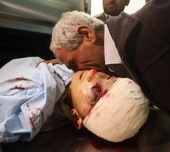
Zakaria Abu Arram 16
Killed 8 mar 2012
The uncle of Zakarya Abu Eram weeps over the dead body of his 17 year old nephew, after an Israeli soldier shot him during an Israeli military operation in the village of Yatta, south of the West Bank town of Hebron on March 8, 2012.
Palestinian Shot Dead Fighting Arrest of Released Prisoner
Israeli soldiers Thursday shot and killed a 16-year-old Palestinian in the town of Yatta, south of Hebron, and injured another during an arrest campaign, according to witnesses and medical sources.
They said Zakaria Abu Arram was killed when soldiers opened fire at Palestinians who confronted them to prevent the arrest of Khaled Makhamra, who was released in the October prisoners swap.
Witnesses said residents confronted the soldiers and a fist fight broke out between them as they tried to free Makhamra from the soldiers.
When they succeeded in doing that, the soldiers opened fire killing Abu Arram and injuring Muhammad Houshieh, 21, who was shot in the foot and stomach.
Soldiers arrested Houshieh and another Palestinian, while they prevented Palestinian ambulances from evacuating Abu Arram’s body.
The Israeli army said Abu Arram was shot dead when he stabbed and wounded one of the soldiers
Killed 8 mar 2012
The uncle of Zakarya Abu Eram weeps over the dead body of his 17 year old nephew, after an Israeli soldier shot him during an Israeli military operation in the village of Yatta, south of the West Bank town of Hebron on March 8, 2012.
Palestinian Shot Dead Fighting Arrest of Released Prisoner
Israeli soldiers Thursday shot and killed a 16-year-old Palestinian in the town of Yatta, south of Hebron, and injured another during an arrest campaign, according to witnesses and medical sources.
They said Zakaria Abu Arram was killed when soldiers opened fire at Palestinians who confronted them to prevent the arrest of Khaled Makhamra, who was released in the October prisoners swap.
Witnesses said residents confronted the soldiers and a fist fight broke out between them as they tried to free Makhamra from the soldiers.
When they succeeded in doing that, the soldiers opened fire killing Abu Arram and injuring Muhammad Houshieh, 21, who was shot in the foot and stomach.
Soldiers arrested Houshieh and another Palestinian, while they prevented Palestinian ambulances from evacuating Abu Arram’s body.
The Israeli army said Abu Arram was shot dead when he stabbed and wounded one of the soldiers
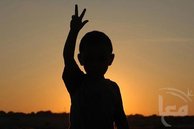
Mustafa Muhammad Sabri Wadi 16
Killed 13 nov 2009 truce violation
of Gaza Valley Village, near Gaza City, Gaza, killed by IDF gunfire to his head and foot while traveling on an animal-drawn cart near the Gaza perimeter fence, three others were wounded, when the army invaded an area close to Juhr Al Deek, east of Gaza City.
The army prevented Palestinian medics from approaching the area in an attempt to evacuate the casualties.
Local sources reported that there were no resistance fighters in the area, and that the persons who were reportedly close to the border were fishermen.
Killed 13 nov 2009 truce violation
of Gaza Valley Village, near Gaza City, Gaza, killed by IDF gunfire to his head and foot while traveling on an animal-drawn cart near the Gaza perimeter fence, three others were wounded, when the army invaded an area close to Juhr Al Deek, east of Gaza City.
The army prevented Palestinian medics from approaching the area in an attempt to evacuate the casualties.
Local sources reported that there were no resistance fighters in the area, and that the persons who were reportedly close to the border were fishermen.
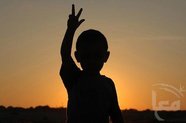
Said Ata al-Hussumi 16
Killed 24 aug 2009 truce violation
of Beit Lahya, Gaza, killed by IDF gunfire to his chest while collecting scrap metal with an older friend, who was also killed, near the Gaza perimeter fence.
Israeli troops positioned to the northwest of Beit Lahia town in the northern Gaza Strip (along the border between the Gaza Strip and Israel) fired at two Palestinian civilians, including a child, who got close to the border. Said was instantly killed by two bullets to the chest, and the other civilian was seriously wounded.
Killed 24 aug 2009 truce violation
of Beit Lahya, Gaza, killed by IDF gunfire to his chest while collecting scrap metal with an older friend, who was also killed, near the Gaza perimeter fence.
Israeli troops positioned to the northwest of Beit Lahia town in the northern Gaza Strip (along the border between the Gaza Strip and Israel) fired at two Palestinian civilians, including a child, who got close to the border. Said was instantly killed by two bullets to the chest, and the other civilian was seriously wounded.
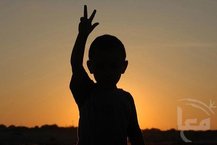
Muhammad Ali Abdul-Fattah Nawara 16
Killed 16 apr 2009
of Ramallah, killed by IDF gunfire to his chest while throwing rocks during a demonstration for Palestinian political prisoners near the Beit El settlement.
Killed 16 apr 2009
of Ramallah, killed by IDF gunfire to his chest while throwing rocks during a demonstration for Palestinian political prisoners near the Beit El settlement.
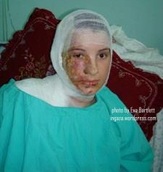
Muhammad Hikmat Matar Abu Halimah 16
Died of her wounds from jan 4 2009, apr 2009 Cast Lead
On 4 January 2009, white phosphorus shells struck the house of the Abu Halima family in Beit Lahiya (northern Gaza) following Israel’s ground invasion during Operation Cast Lead.
Four siblings, Shahd (1.5), Hamza (7), Zaid (10) and Abed al-Rahim (13) and their father were killed in the explosion and fire that ensued.
Another female relative died from her injuries almost three months later in a hospital in Egypt.
Several other family members, including their mother, two other siblings, Ali (5) and Yousef (15), and a 3-year-old niece suffered white phosphorus burns.
The 3-year-old remains hospitalized in Egypt with life threatening third degree burns.
As family members attempted to evacuate the injured, they came under gunfire from Israeli soldiers killing two cousins aged 16 and 17, and wounding yet another sibling aged 17, as well as an adult female relative.
In total, eight members of the Abu Halima family were killed, including six children.
Died of her wounds from jan 4 2009, apr 2009 Cast Lead
On 4 January 2009, white phosphorus shells struck the house of the Abu Halima family in Beit Lahiya (northern Gaza) following Israel’s ground invasion during Operation Cast Lead.
Four siblings, Shahd (1.5), Hamza (7), Zaid (10) and Abed al-Rahim (13) and their father were killed in the explosion and fire that ensued.
Another female relative died from her injuries almost three months later in a hospital in Egypt.
Several other family members, including their mother, two other siblings, Ali (5) and Yousef (15), and a 3-year-old niece suffered white phosphorus burns.
The 3-year-old remains hospitalized in Egypt with life threatening third degree burns.
As family members attempted to evacuate the injured, they came under gunfire from Israeli soldiers killing two cousins aged 16 and 17, and wounding yet another sibling aged 17, as well as an adult female relative.
In total, eight members of the Abu Halima family were killed, including six children.
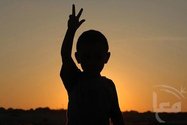
Jamal Abdul-Nasr Mustafa Fuqaha 16
Killed 26 feb 2009 Cast Lead
of Tayaseer, near Tubas, killed by shrapnel to his face, chest and abdomen from an unexploded IDF ordinance, while having a picnic in the Yarza area, east of Tayaseer.
Killed 26 feb 2009 Cast Lead
of Tayaseer, near Tubas, killed by shrapnel to his face, chest and abdomen from an unexploded IDF ordinance, while having a picnic in the Yarza area, east of Tayaseer.
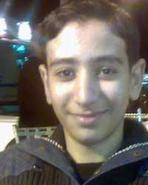
Abdullah Nabeel Asleem 16
Died of his wounds 24 feb 2009 Cast Lead
Cause of Death: Shells from Israeli Air force F-16
More Details:
Truly it was painful time that the Gazans people were lived during the Israeli war on the district.
To escape the endless fear, Abdullah took his cousins to the roof to do something new rather than hiding all the time. They went up there to feed their little birds .
Suddenly Israeli Air force F-16 begun to hit this populated area. Abd Allah’s body flied away to the neighbors’ house because of the suddem explosion. All of his brothers and cousins died, but Abdullah and his brother Mahmoud were in serious injured.
Abdullah was in a coma, moved between hospitals in Gaza and Egypt till Feb 24. Later he came back to Gaza after he died.
Died of his wounds 24 feb 2009 Cast Lead
Cause of Death: Shells from Israeli Air force F-16
More Details:
Truly it was painful time that the Gazans people were lived during the Israeli war on the district.
To escape the endless fear, Abdullah took his cousins to the roof to do something new rather than hiding all the time. They went up there to feed their little birds .
Suddenly Israeli Air force F-16 begun to hit this populated area. Abd Allah’s body flied away to the neighbors’ house because of the suddem explosion. All of his brothers and cousins died, but Abdullah and his brother Mahmoud were in serious injured.
Abdullah was in a coma, moved between hospitals in Gaza and Egypt till Feb 24. Later he came back to Gaza after he died.
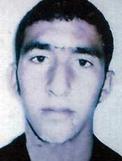
`Abdullah Muhammad Hamdan Abu Rock 16
Died of his wounds 23 jan 2009 Cast Lead
The family of Muhammad Hamdan Abu Rock tried to escape the white Phosphorus shells which the occupation forces used to shower the city. However, the family could not escape the shells; its child `Abdullah fell as a martyr.
`Abdullah was trying to escape with his friends when the reconnaissance warplanes targeted him with a missile causing one of his legs to be cut off from his body. A second missile hit him directly and tore up his bowel, lungs, and liver. He was transferred from Gaza to Egypt.
`Abdullah stayed in one of Isma`iliyyah hospitals until he was died fourteen days after his injury.
Died of his wounds 23 jan 2009 Cast Lead
The family of Muhammad Hamdan Abu Rock tried to escape the white Phosphorus shells which the occupation forces used to shower the city. However, the family could not escape the shells; its child `Abdullah fell as a martyr.
`Abdullah was trying to escape with his friends when the reconnaissance warplanes targeted him with a missile causing one of his legs to be cut off from his body. A second missile hit him directly and tore up his bowel, lungs, and liver. He was transferred from Gaza to Egypt.
`Abdullah stayed in one of Isma`iliyyah hospitals until he was died fourteen days after his injury.
